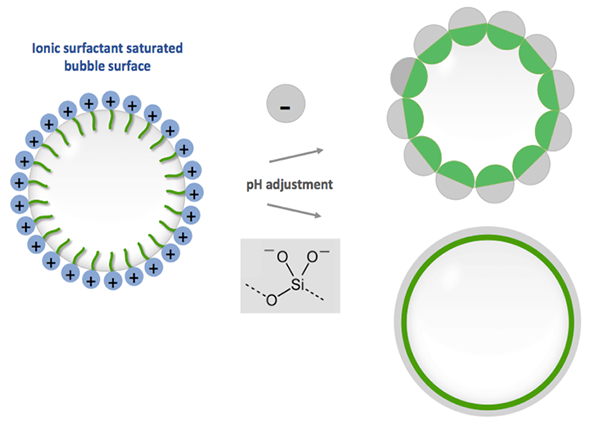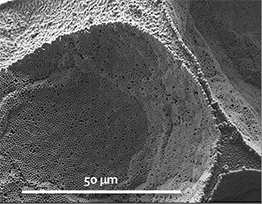Publication of the LPENSL in the journal Physical Review Applied on July 6, 2022. CNRS-INP communication on July 7, 2022.
We propose an original microbubble encapsulation process, using electrostatics as a driving force to guide either particles or polymerizable precursors to the bubble surface. Taking advantage of attractive interactions between surfactant-laden charged bubbles and oppositely charged self-assembling species, our method produces capsules with diverse protective shells that remain stable for years. Considering heterogeneous electrostatic double-layer interactions, we quantitatively predict critical particle surface potentials required for complete encapsulation. The particle-based shells can be disintegrated with a pH adjustment, allowing for a controlled release of encapsulated payloads, while the glassy continuous silicate capsules are chemically resistant to pH changes. Our process, which can be equally applied to liquid droplets, easily scales up for industrial developments.


Reference: Microbubble Encapsulation by Electrostatic Templating with Ionic Surfactants. Vance Bergeron, Ramon Planet, and Stéphane Santucci Phys. Rev. Applied, July 6, 2022.
DOI : https://doi.org/10.1103/PhysRevApplied.18.L011001






